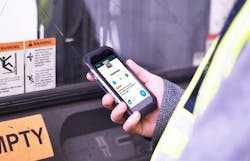Using IoT to Put Safety Data into Workers Hands
Ted Smith, CEO of Corvex, is out to build a movement.
“I want to give power to the workers through data,” he says. “Robots are data-driven. If we give them the data, why can’t we give that data to workers to make them safer?”
Smith points out that there is a “massive amount of unstructured data on the shop floor as it relates to safety. But it’s hard to do something with that data.”
On the factory floor workers are responsible for safety and need to carry out procedures that ensure a safe working environment, but often their recommendations on how to improve safety are not acted upon. This, in turn, causes workers to become frustrated and eventually disengaged, Smith says.
So his company tapped into that disconnect and created accountability and transparency through a digital platform. “When the device becomes the digital suggestion box, it doesn’t go away. It’s out there for everyone to see and therefore becomes resolved quickly. Often a process is put into place and the workers see the results. This success feeds on itself,” says Smith.
Even better, asserts Smith, is that the IoT-based platform that uses real-time worker data makes safety proactive rather than reactive. As workers received real-time information they can communicate concerns in current time and have the issues corrected quickly. No more waiting until the next morning safety meeting to fix the problem.
The availability of digital information at the workers’ fingertips also enables training. If ever uncertain on how to operate a piece of machinery they can access a video that provides instructions.
To ensure ease of use Corvex designed the software with the workers in mind. It had to be easy to use, provide specific personal results and not feel like “big brother” in any way, says Smith.
There is also an added benefit of creating a community among workers as they share information with each other on how to solve a variety of safety issues.
The technology creates an important connection says Smith. “A truly connected workforce can perform better and with more purpose.”
